Broken landscapes
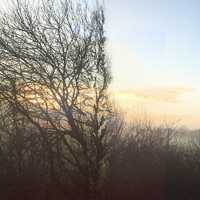
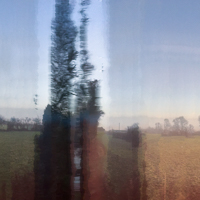
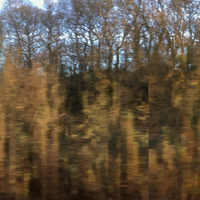
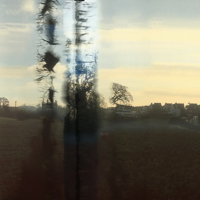

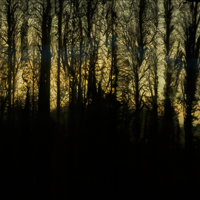
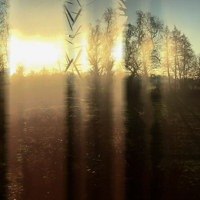
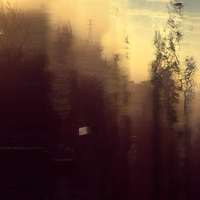
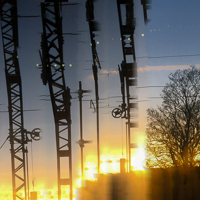
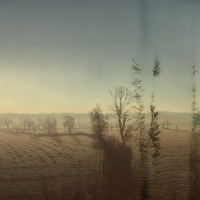
My iPhone has the eye of a Victorian gentleman. Its "panorama" setting cannot produce the panoramic perception necessary to train travel. Like a Victorian it suffers from railway brain, a form of neuraesthenia brought on by travelling at speed. While my eyes, superbly modern instruments, can flit seamlessly across the scene, the phone camera judders and jumps, nervously twitching and shuddering. Its tiny electronic eye cannot keep up with the speed of the train and it confuses trees with pylons. Sometimes, poor old colonial, it looks out on the alien industrial landscape and fancies it sees a beautiful romantic vista, the Alps or the Black Forest. I pamper to its delusions, and feed it ploughed fields and housing estates, sub-stations and shunting yards.
Year Without A Summer
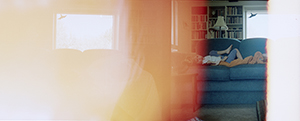

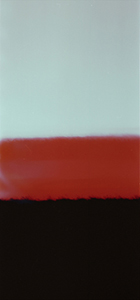

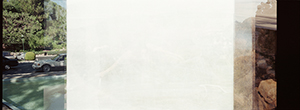
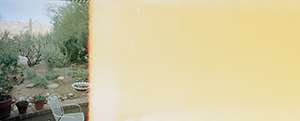
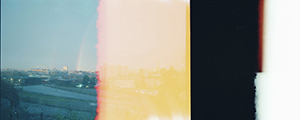
1816 was the year without a summer. Crops failed and mass famine followed. The dismal weather inspired Mary Shelley's Frankenstein and Byron's poem Darkness. In 1816 Nicéphore Niépce first attempted to harness the sun, to make photographic pictures. By the mid twentieth century, 35mm roll film became the means to record summer holidays – thanks to Kodak. Now the long hot summer of 35mm photography is ended. Year Without A Summer is made from the ends (actually the beginnings) of roll-films I have shot over many years. They combine lost moments, broken memories of summers long past with a kind of abstract painting that was supposed to be a 'painting degree zero' - painting reduced to its pure essence. These ends of film strip take film-based colour photography back to its simplest form - to the biting, burning action of light on celluloid.
Everything is Twice
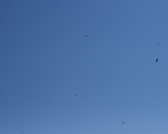
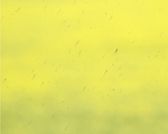
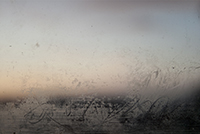
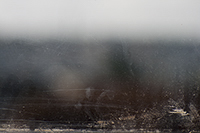
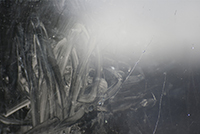
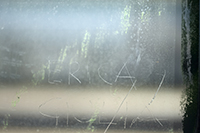
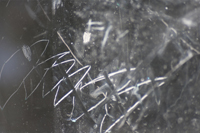
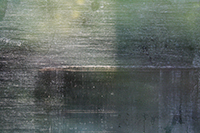
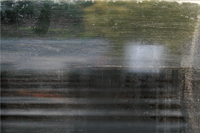


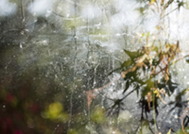
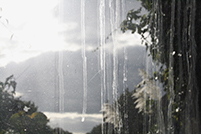
I'd have liked to be a modernist but I'm a hundred years too late. The shiny materials of modernism, the glass and steel, have become grubby and no-one believes photography can show us anything new anymore. But then, some kinds of modernism were always a bit too Pol Pot for comfort. As if you could get rid of the traces of the past, and just begin afresh. These are human traces, the signs of wear and tear. Materials carry memories within them and they hold onto them even after the people are gone. Everyone seems to want to get rid of the medium: to have virtual or augmented reality, illusions suspended in mid air, even eventually no screens, and no material support. But then we feel nostalgic too for the signs of materiality: the scratches on a record or a piece of film, the light leaks in a faulty camera. Which is odd because if you listen to a new vinyl record or watch a newly released 35mm film, the first thing that strikes you is how pristine they are, how high resolution they are, how much depth they have. Really, it's not about the analogue and the digital at all but about loving the thingly or hating our bodies. We dream of immateriality, of a spirit world, of telepathy just like the Victorians did, and like them we are also in love with stuff. I like to photograph dirty and scratched windows, especially the train door windows that are pulled up and down at every stop. But if you really want to know what this is all about, it's about what I think photography can be or do these days. If a photograph is going to be a window on the world, it ought to be filthy and fragile. I'm sure there's a Flickr stream of the filthy and fragile, also tagged 'picturesque ruins'. But, being a modernist-come-lately, I don't want to add to that. I'm still hoping for something new, even if it is a new kind of old. Through the glass (the window or the camera lens) we still might glimpse Utopia - though it may turn out to be a car park.
The White Album
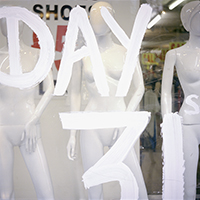
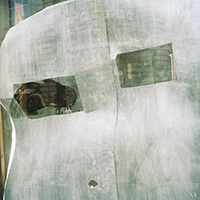
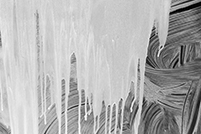
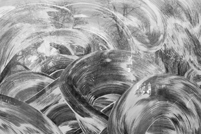
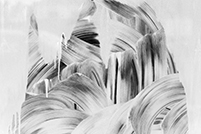
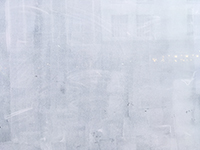
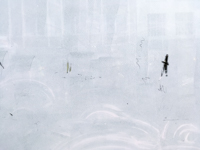
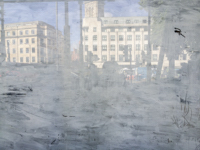
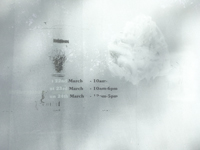
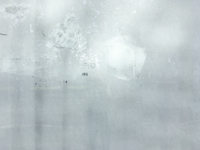
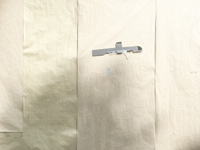
For a while, I worked arranging the shop window display for a large charity shop in Peckham. One morning, as I arrived, I glanced at the lemon yellow window I had dressed the previous week and noticed that every piece of clothing was spattered with red-brown spots — bloodstains. The manager had been punched in the nose by a man he had accosted for shoplifting and his blood sprayed all over the shop . They had cleaned everything except the things in the window. It had been like that for several days. Much later I became interested in the windows of shops that have closed down, or are being refurbished. Because the window is a display case for the shop as a whole, it is usual to conceal what is going on inside until the new store or new display is ready. But the act of concealing itself becomes an artwork, as the brushstrokes and drips of white emulsion on the inside of the glass recall abstract expressionism, with Cy Twombly scratches or Basquiat drawings, or maybe paper wrappings reminiscent of Christo. I like the contrast between this kind of accidental abstraction and the flamboyant art of window dressing, pioneered by people like Frank L. Baum, who, as the author of The Wizard of Oz, proved to be a master of phantasmagoria. Obscured windows sometimes signify the arrival of hard times, but can also represent that which precedes and perhaps precipitates the recession: the rapid turnover of an overheated capitalism, in which new stores open and close almost weekly. These windows, photographed over several years, rarely feel ominous to me. But then, nor did my lemon yellow display, until I noticed the blood.
Construction Work
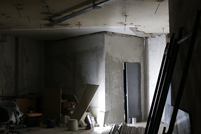
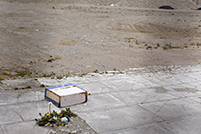
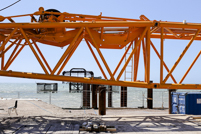

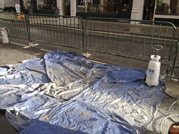
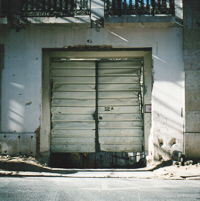
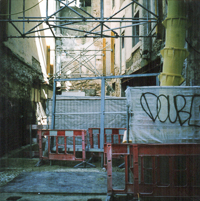
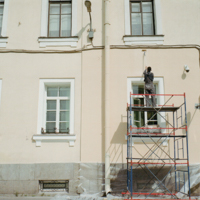
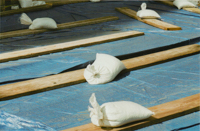
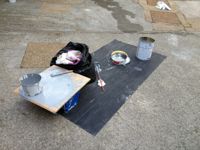
Construction Work is an ongoing project of photographs of half-completed or abandoned construction sites. It is based around an implied analogy between the work of artistic construction and of building. Appropriating aesthetic devices from late modernism it takes accidental or practical arrangements and reinvents them as staged spaces for action. The finished objects are somewhere between photographs, paintings, and DIY.
Early Work
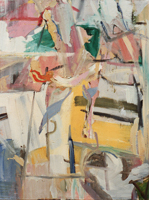
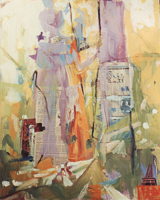
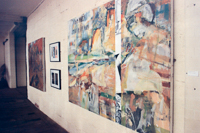
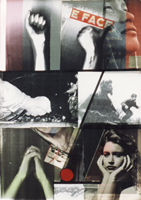
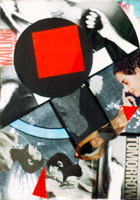
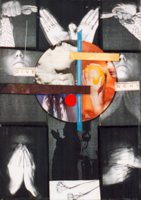
Artwork in various media from the 1990s.